Table of Contents
- Wheels For Tandem Bikes
- Trailers For Tandem Bikes
- Handlebars For Tandem Bikes
- Tyres For Tandem Bikes
- Suspension Seatposts For Tandem Bikes
- Gearing On Tandem Bikes
- Brakes For Tandem Bikes
- Tandem Timing Chains, Chainrings and Cranksets
- Crank Phase On Tandem Bikes
- Rohloff Hubs For Tandem Bikes
- Carbon Belt Drive On Tandem Bikes
- Independent Coasting Systems
- Tandem Bikes For Families
- Folding Tandem Bikes
- Marathon vs. Compact Tandem Bikes
- Making Frames Smaller On Tandem Bikes
- Other CyclingAbout Tandem Pages
- If You Have Any Questions, Feel Free To Leave A Comment.
We love tandem bikes because they’re fast and they’re fun. Oh, and they make everyone smile. This article is designed to answer any technical questions you may have about tandem bikes and components, with a specific focus on bicycle touring. We also have a tandem bicycle touring article which runs alongside this:
Tandem Bicycle Touring: Everything You Need To Know
Wheels For Tandem Bikes
The wheels on a pannier-laden tandem are the most important component choice. We have destroyed enough rims and spokes that cheap or lightweight parts are simply not ok. The rim and wheel build quality seem to be the two most important factors of a strong touring wheel. With a good quality build, we usually crack the rims before we’ve even broken a spoke. Our advice is therefore quite simple: find the strongest rim and best wheel builder you can!
Rims. If you’re touring with lots of weight like us, we recommend only one rim manufacturer – Ryde (formally Rigida). The Andra 30 model is available in both 26″ and 700c is probably the strongest touring rim available in the world: this is our shining review of the Ryde Andra 30 rim. If you’re seeking 48 hole rims, the Velocity Chukker is your best bet. And if you’re travelling without weight, you can get certainly get away with lighter weight options.
Spokes. Tandems typically have more spokes than standard wheels in order to reduce load on each spoke, nipple and rim hole as well as across the hub flange. Tandem wheels can be found to have 32, 36, 40 or 48 spokes, but if your wheels are on the cheaper side, make sure to use 48 spokes. The better the quality of gear, you can get away with less spokes without compromising strength. We use 32 spokes front and rear (as we wanted to use our existing hubs) and since having our wheels built properly, we’ve suffered no spoke breakages on our very heavily-laden tandem.
26″ vs 650b vs 700c. For off-road or heavily-laden touring, you’re going to need as much strength as you can get – we found this out the hard way. We strongly recommend 26″ wheels for touring because they are simply stronger than 700c wheels due to their smaller diameter size and reduced spoke length. 650b wheels slot in between 26″ and 700c and are becoming increasingly more common, but spare parts are still very rare in most bike shops.
Hub Width. There are a few hub sizes for tandems. 135mm rear spacing is standard for most bicycles, but tandem wheels can be found in 145mm and 160mm. At 160mm wide, rear wheels can be ‘dishless’ – building a stronger wheel because spoke tension is the same on every spoke.
Trailers For Tandem Bikes
We prefer the manoeuvrability and reduced weight of a tandem without a trailer, but trailers are certainly a great way to reduce the load off your tandem wheels. We especially recommend trailers for people using tandems with cheaper, factory-built wheels. Check out the 16 Best Bike Trailers for Bicycle Touring for more information.
Handlebars For Tandem Bikes
For pilots on a tandem, handling is much more demanding on the upper body than on a standard bike. This is because the front rider needs to balance out shifts in weight made by the stoker, in addition to managing the front bags (on a touring tandem) which slow the steering speed. My body took about a month of touring to build up the core strength required to manage our bike properly.
I prefer a road handlebar due to the various positions it offers, but generally advise most people to use a flat handlebar. Wide, flat handlebars make handling a tandem easier for pilots because they increase the steering leverage, making managing loads much easier. Make sure to catch our handlebar article: All About Bike Touring Handlebars.
For stokers, a flat or bullhorn handlebar is the way to go. Drop handlebars are not really necessary because stokers are shielded from the wind by the front rider. Stoker bars need to be relatively wide to make sure they clear the front rider’s hips.
Tyres For Tandem Bikes
Tyre choice is important on tandems, as it is on any bike.
The wider the tyre, the more the tyre can absorb shock and depressions in the road. This is particularly important because rear cyclists cannot prepare for bumps as well as those up front. In addition, wider tyres also reduce tyre, rims and spoke issues because of their ability to absorb more bumps and shock. For a loaded tandem, we recommend using tyres which are at least 26 x 2.0″ or 700c x 40c.
As tandems often carry 150-250kg worth of bike and rider, hard wearing tyres are really important. We have had the most success with Schwalbe tyres (Mondial, Supreme or Dureme) because of their exceptional durability and puncture resistance, but Vittoria, Panaracer and Continental make some suitable tyres for tandems. We covered over 20,000km on our Schwalbe Marathon Mondials though, jus’ sayin’.
For our comparison between 26″ and 700c wheels, please click HERE.
Suspension Seatposts For Tandem Bikes
Unlike the pilot, a stoker is not able to see and anticipate bumps. Suspension seatposts are really important for stokers on roads which are of a low quality, and it is best to do everything you can to make the stoker happy because tandems aren’t as fun without them!
The best suspension seatpost on the market is the Cane Creek Thudbuster, which uses an elastomer to absorb any shock from the road. Unlike other posts, it uses a parallelogram design which doesn’t change the cyclists saddle height when active.
Gearing On Tandem Bikes
Given that tandems are fast, most tandemists need lots of top end gears. But tandems also require lots of low end gears, therefore, a balance must be struck.
Road tandems will require more top end gears than off-road and loaded touring tandems because of their high power-to-weight figure. I recommend gearing at 10% harder than a solo road bike if your tandem will mainly see flat roads with the odd hill. For those who are keen to ride any kind of road, you will do well with the same or 10% lower gearing than a solo road bike. Road triple cranksets have a wide gear range and drop down to a 30t front ring, which is perfect for going fast and climbing.
For any other tandem, we recommend about 18 gear inches as the lowest gear. This is the same as using the smallest gear on a triple MTB crankset (24t x 34t). In this gear, we ride at 4-5km/h if we need to; any slower and we’d be better off walking. You can calculate gear inches HERE.
For information on Rohloff hubs and tandems, scroll down.
Brakes For Tandem Bikes
Tandems can often carry two or more times the load of a solo bike, so you’re going to need some powerful brakes. We recommend the use of disc brakes on all but the lightest weight tandems. You can read everything about brakes and touring in our article All About Touring Bike Brakes.
Rim Brakes. Rim brakes work fine on road tandems and touring tandems that stick to the pavement. However, it is important to know that on long descents, rim brakes can heat the rim up so much that the tyre blows off the rim. Although this has not happened to us, it has to our friends – rim brake users be careful!
Disc Brakes. The best v-brakes can be powerful, but they are nothing compared to disc brakes. Stopping 150-250kg on a dime really takes a good set of anchors, and disc brakes are the best out there for this. Disc brake brands that I trust and personally use are Shimano for hydraulic (XT or Saint), or Avid/TRP for their mechanical (BB5/BB7 or Spyre). It is important to use 8″ rotors on tandems because of their ability to cool down quicker, as well as stop well.
For the down-low on brakes for touring bikes, read our article on touring bike brakes HERE.
Tandem Timing Chains, Chainrings and Cranksets
There isn’t anything particularly special about timing chains, other than the fact that you will need approximately one and a half chains to make it work.
Timing chainrings must both be the same size to give a 1:1 ratio which will allow both the front and rear cranksets to be in phase. It is advisable to use largish chainrings of between 38-44t because the smaller the chainring, the harder the chain pulls (to make up for the fact it is not moving as fast) and the quicker everything wears out.
Timing chains normally run on the non-drive side of a tandem, but you can run timing chains on the drive side too. The advantages of running it on the drive side include being able to use conventional cranksets which are often cheaper and come in a range of sizes, and it keeps the greasy chains to one bike side. The disadvantages include the greater challenge of spacing out chainrings, and the fact that you may be limited with shifting options on derailleur gear systems. It is most common to see a drive side setup with an internally geared hub like a Rohloff.
It is possible to use Gates Carbon Drive as a timing belt. This will save you about 250g over a chain and chainrings. In order for Carbon Drive to work on your tandem, the frames boom tube must be 724mm between bottom brackets and you will need to use 130bcd cranks. We use Carbon Drive on both the drive and non-drive side of our tandem.
Crank Phase On Tandem Bikes
Tandems are traditionally set up to have the cranks/pedals in the same starting location for the front and rear riders. But some people like to have the cranks out of phase (eg. 90 degrees out) which apparently eliminates the ‘dead spot’ in the pedal stroke. We have tried our cranks at different phases and feel like in-phase works best for us. It’s best for starting, best for cornering, best for coasting and best for balancing.
Rohloff Hubs For Tandem Bikes
Rohloff hubs are perfect for tandems. Rohloff make a tandem hub kit (T) which comes with tandem length cabling, but there is nothing special about the hub itself. For the best results, use a tandem frame built with a Rohloff dropout and two eccentric bottom brackets to adjust your chain length.
Rohloff hubs are available in either 32 or 36 spoke hole. Given that the Rohloff hub flange is large (meaning short spokes) and the wheel is ‘dishless’ – either spoke count will serve you fine, but if given the option, request 36 spokes.
The minimum gear ratio you can run on a Rohloff tandem is 2.5:1. We ride with this ratio and in our lowest gear (18 gear inches) we can ride at 4-5km/h up really steep hills. We are also able to chug along at 45km/h in our top gear (95 gear inch). If you are riding your tandem on flat roads, you will most likely want your Rohloff gear ratio to be 3:1 or above.
For a comparison between standard cranksets and Rohloff hubs, this page from the manual shows that having a 22t-32t on a derailleur drivetrain is the same low gear as 40t-16t on a Rohloff. Likewise, a top gear equivelent of 54t-12t is achieved on a Rohloff running 50-16t.
Rohloff Rims. Rohloff recommend using a custom drilled Rigida Andra 30 rim in a 26″ wheel build because the rim holes are drilled on an angle. This allows the nipple to protrude at a straight angle from the rim, which in turn reduces any stress to the spoke, nipple and rim.
Make sure to read our article specifically on how to build the strongest Rohloff wheel you can.
For more Rohloff technical information, check out 15 Reasons Why You Should Ride Rohloff and 23 Ways To Mount A Rohloff Shifter With Drop Handlebars.
Carbon Belt Drive On Tandem Bikes
A Gates Carbon Belt drivetrain is perfect for tandems. The only prerequisites are that your frame needs to be Carbon Drive compatible and you will need to use an internally geared hub (Shimano Alfine or Rohloff).
If you haven’t heard of Carbon Drive, the reason we like it is that it is silent, lightweight and maintenance free. For the full low down on Carbon Drive, read our article, Carbon Drive: Everything You Ever Need To Know. We have found that the Gates Centertrack kit to be leaps and bounds better than the CDC/CDX type. We have published a review of the Centretrack kit, make sure to read it.
Those with derailleur drivetrains can also benefit from a carbon timing belt if your frame has been designed around the right distance between bottom brackets (724mm). This will save 250g from your existing tandem.
Independent Coasting Systems
On a standard tandem, both riders pedal at the same time, so when one rider wants to rest, it means both riders must rest. Independent coasting systems change this, by promising to make starting, stopping and cornering easier, as well as allowing riders to take independant breaks at times which suits them. We didn’t feel this was necessary for us, but it is worth noting that a company called DaVinci Tandem bikes make bikes around this concept.
Tandem Bikes For Families
There are a few companies making tandem bikes for families. Co-Motion, the manufacturer of our tandem make a series of bikes called the ‘Periscope’. The premise behind them is that the rear seat tube is really small with a highly adjustable seatpost. This allows young children as small as 100cm, and adults alike to be able to be a stoker on the same bike.
Other Designs Include: Onderwater tandem
Folding Tandem Bikes
A few companies make folding tandems – perfect for space conscious people (such as caravan owners) and regular public transport users. Although wheels smaller than 26″ are not our style, we can appreciate that for some people a folding tandem is the perfect tandem. Bike Friday are widely accepted as the worlds best folding tandems, and are something we’d like to try one day. Check out Bike Friday and KHS for 20″ folding tandems, and Koga for 700c folding tandems.
Marathon vs. Compact Tandem Bikes
Tandems are often built using two different frame designs:
Marathon Frames. Lateral stiffness is increased on marathon frames via the additional lateral tubeset, reducing any twisting or shimmy-ing when carrying gear. This allows frame builders to use smaller diameter, thinner drawn steel tubesets which result in great vertical compliance and vibration dissipation.
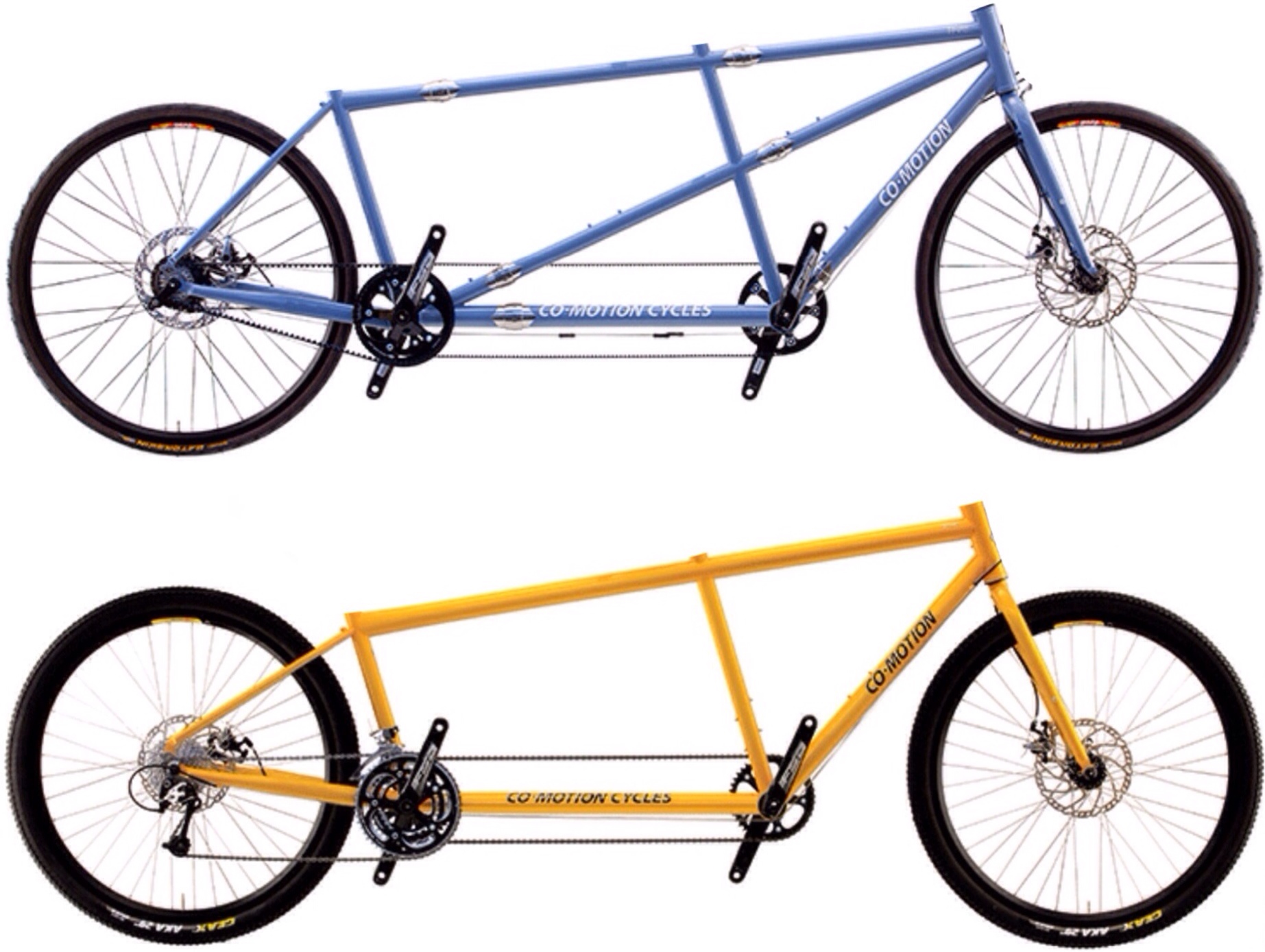
Compact Frames. Built with larger diameter and thicker walled tubes, these frames are just as stiff as the marathon design, making them perfectly capable as a touring tandem. As a result of the thicker tubing, compact frames don’t offer the vibration dampening qualities of the marathon design.
Making Frames Smaller On Tandem Bikes
Did you know that it is possible to get a tandem frame down to the dimensions of a 26″ wheel? The most common way to reduce the size of a tandem is by using S&S couplers. Our Co-Motion splits into three pieces whilst other tandem manufacturers choose to split their frame into two. Amazingly, couplers don’t decrease a frames strength or stiffness – they increase it.
Another custom option is using Ritchey Breakaway components. A complete bike that can be reduced in size is the Koga Touring bike which actually folds in half, reducing its length for transport.
Other CyclingAbout Tandem Pages
Video: Introducing Tan-Nay-Nay
Our List of Initial Impressions On Travelling In Tandem
Build Breakdown: Our Co-Motion touring tandem
Making Tan-Nay-Nay Happen
Why Did We Purchase A Tandem?
Why Did We Choose Co-Motion To Build Our Tandem?
Kat’s Post On Panic Attacks Touring On A Standard Bike
A List Of Tandem Manufacturers And Builders (With Pricing)
A Detailed Look Into The Custom Frame Building Process


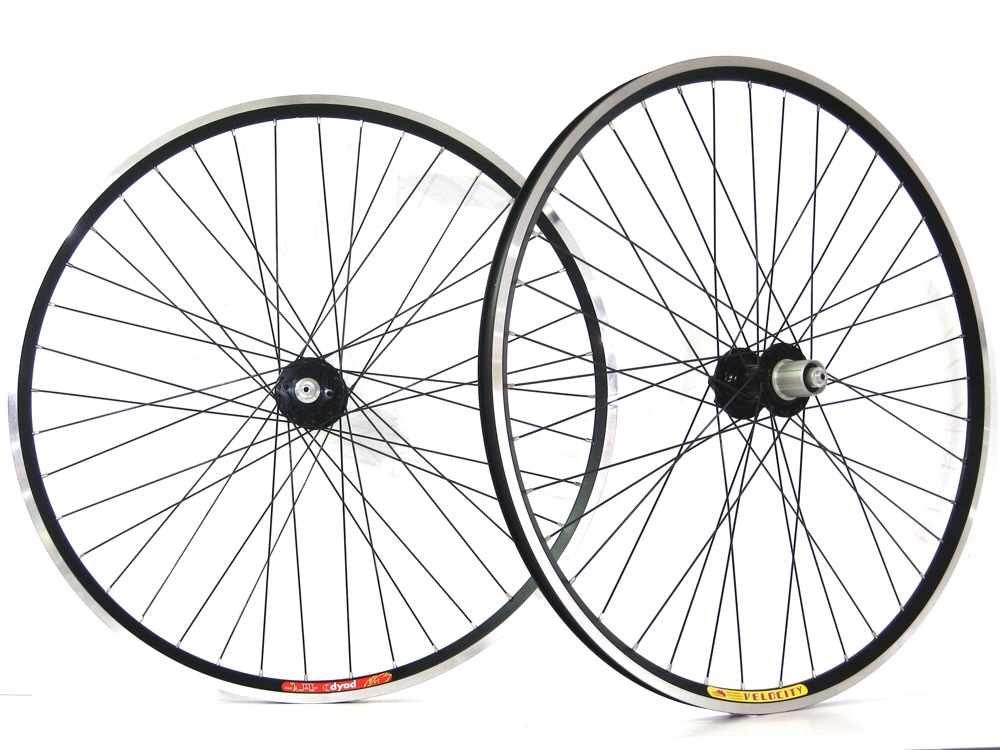

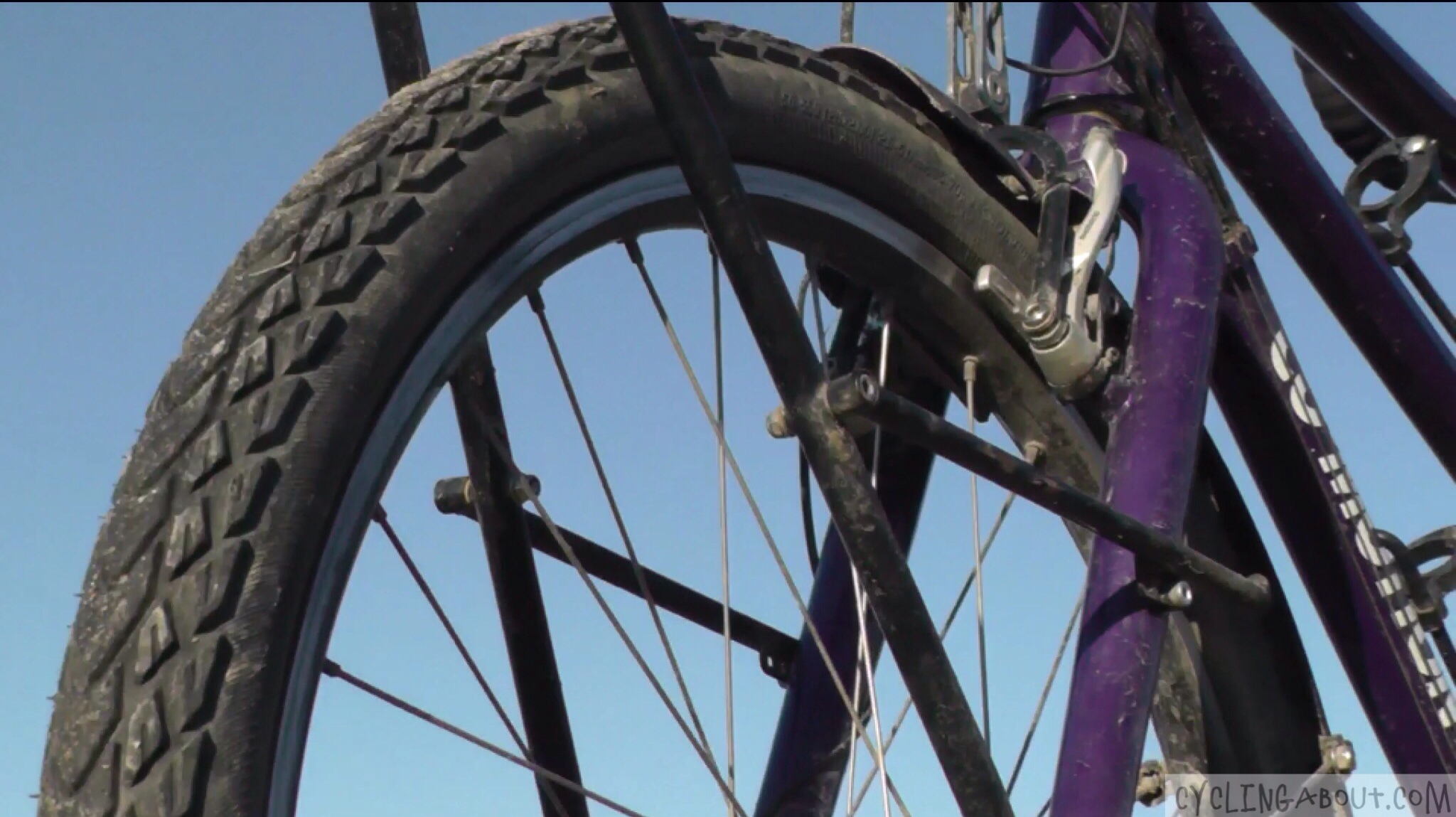
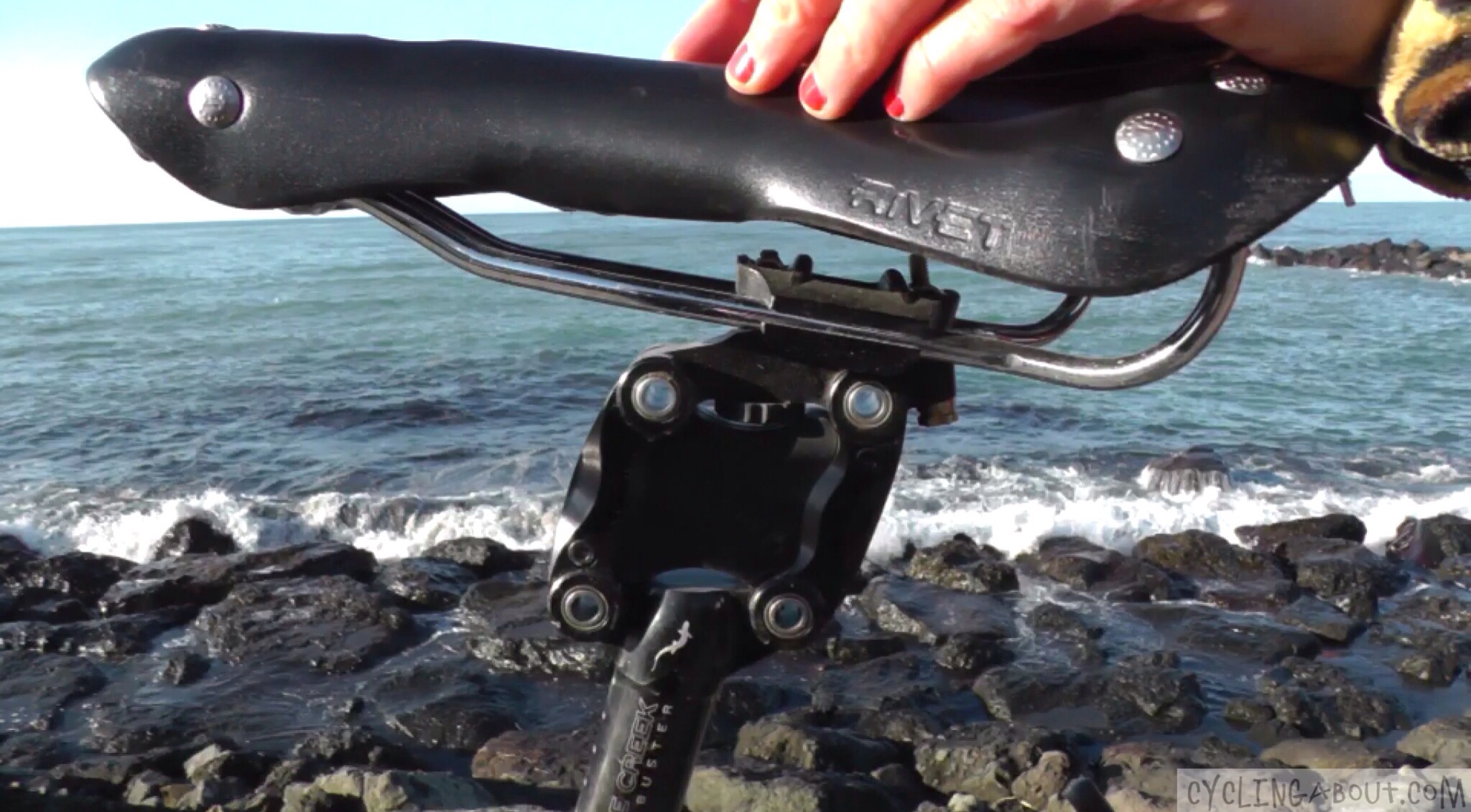
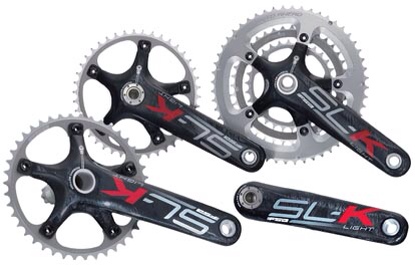
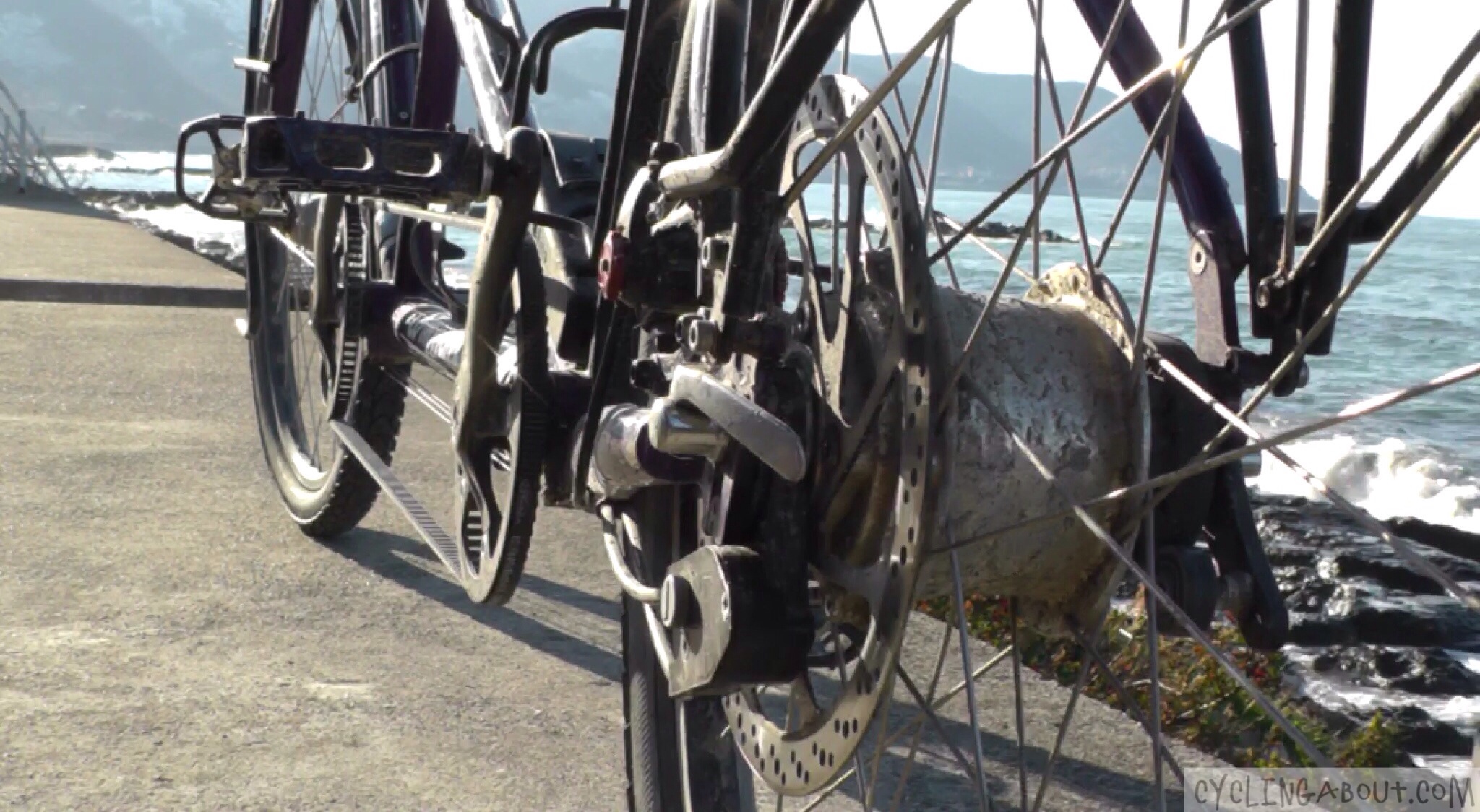
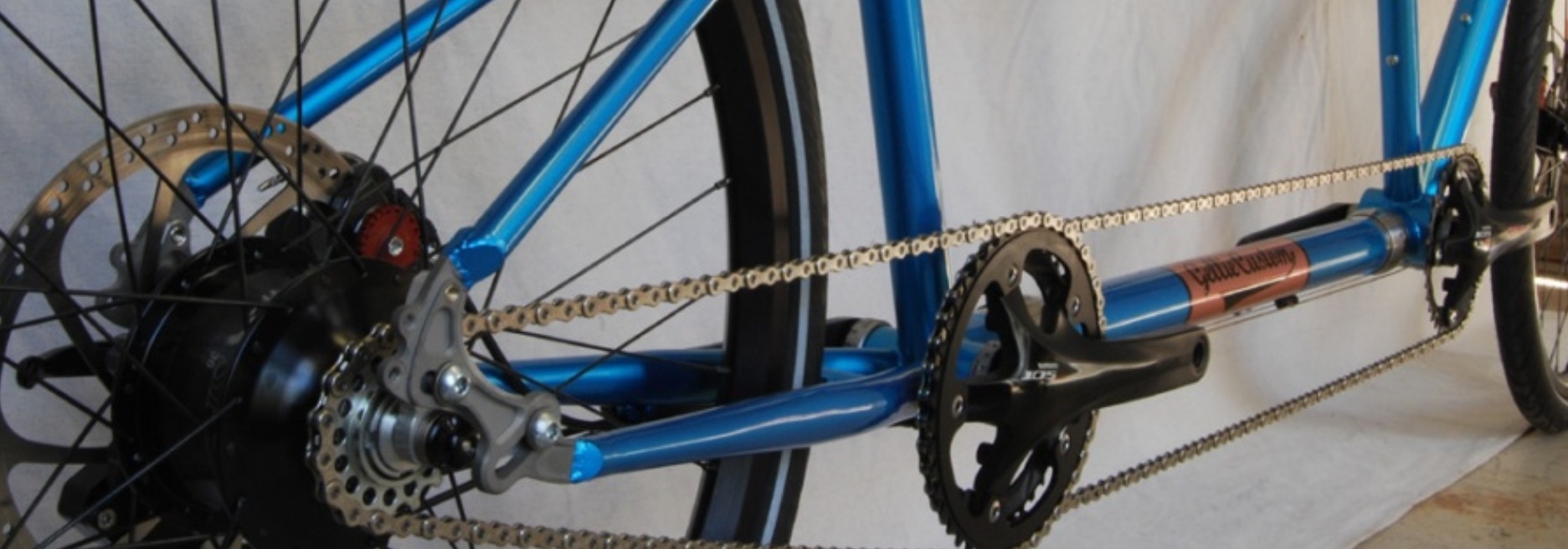


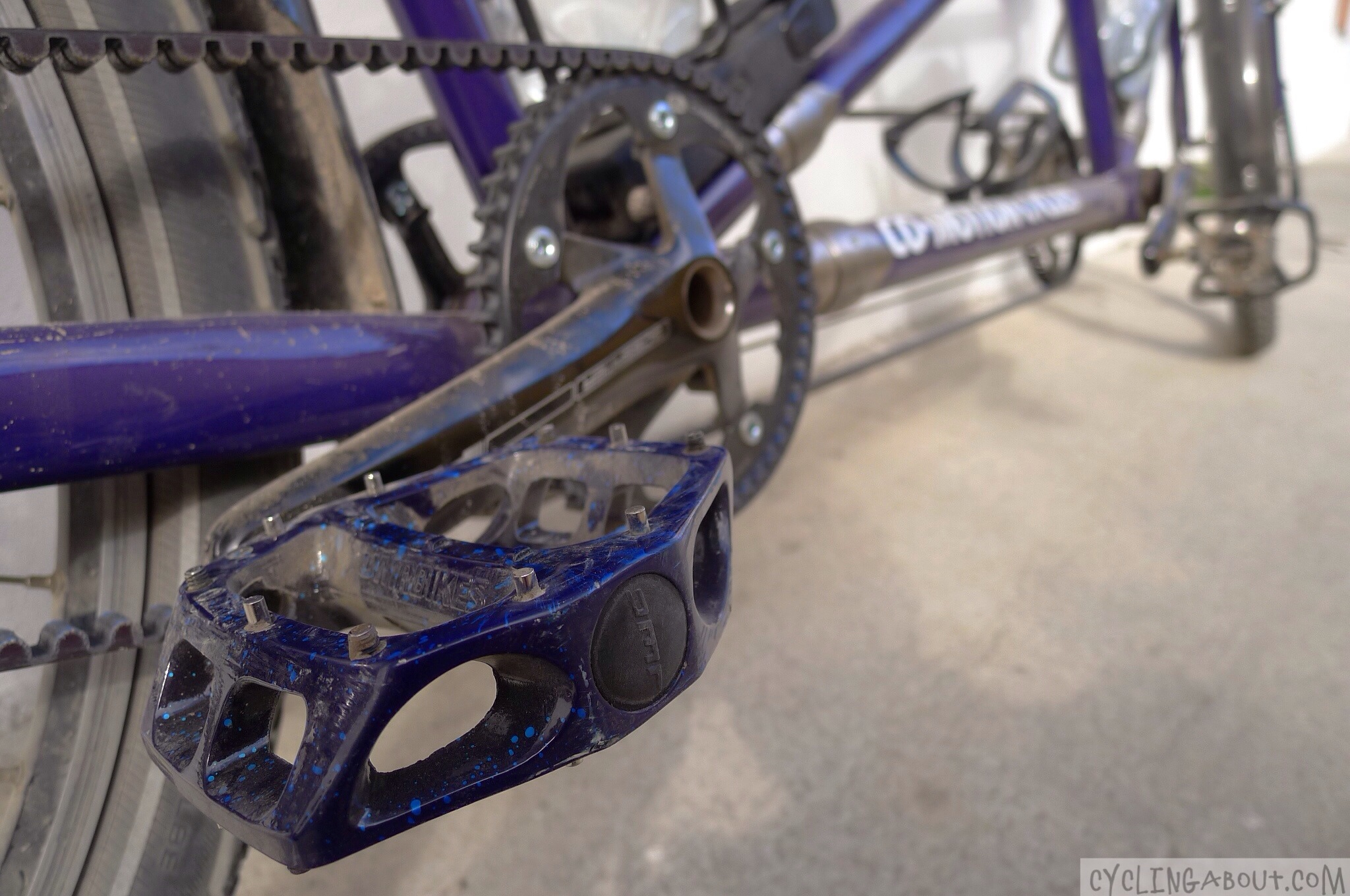
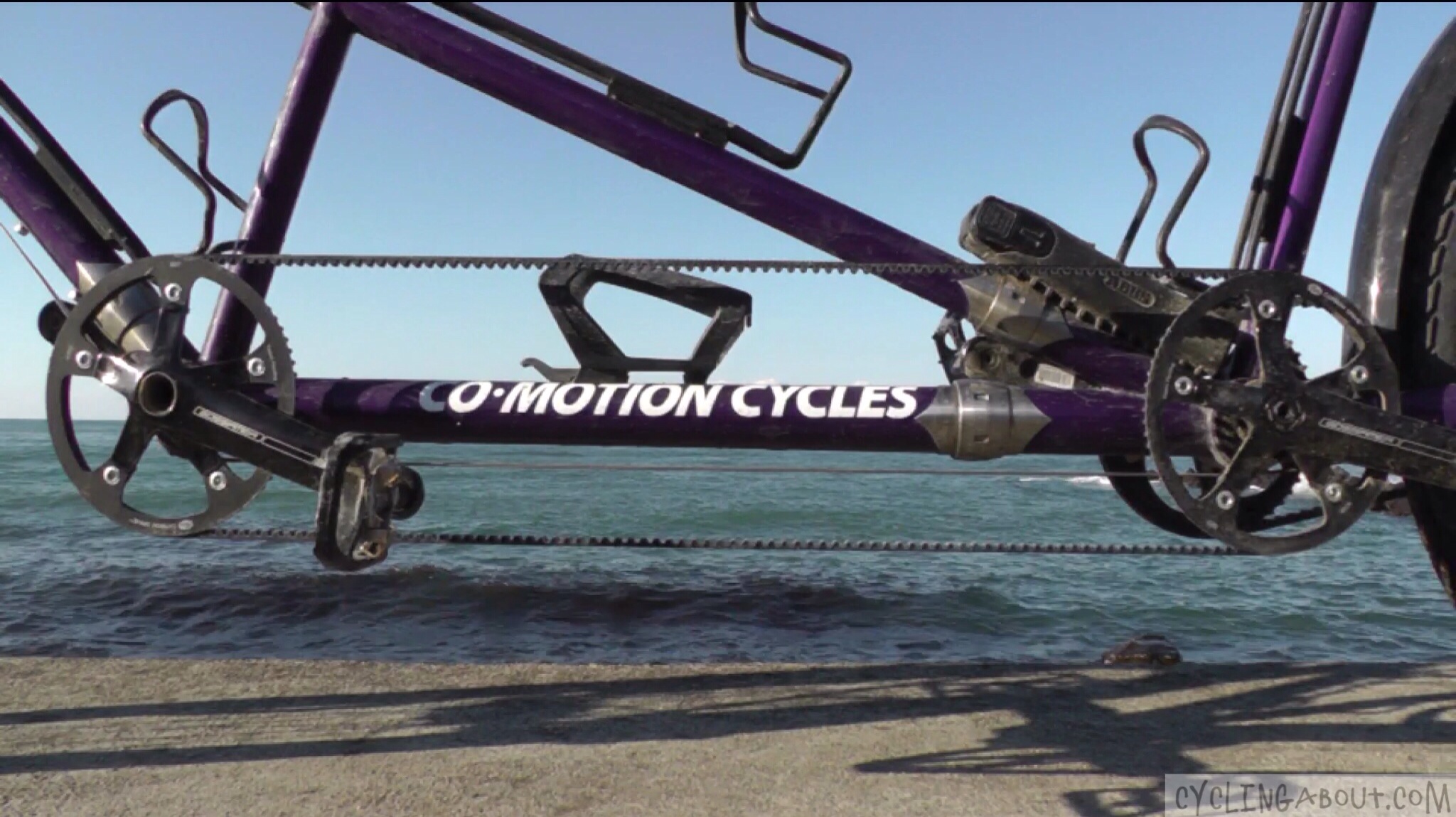
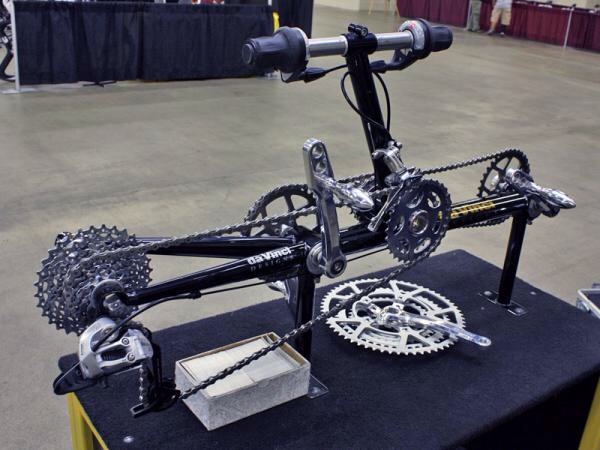

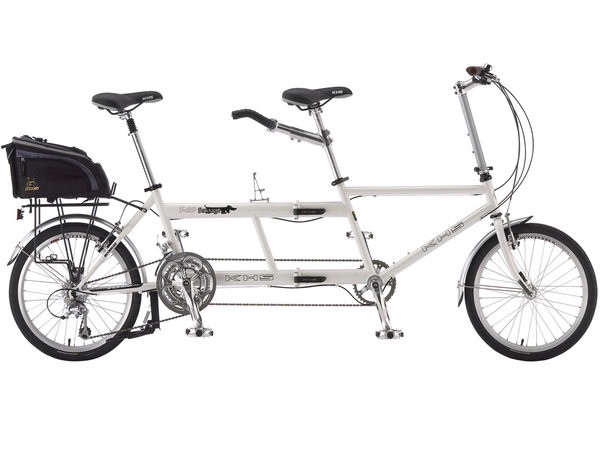
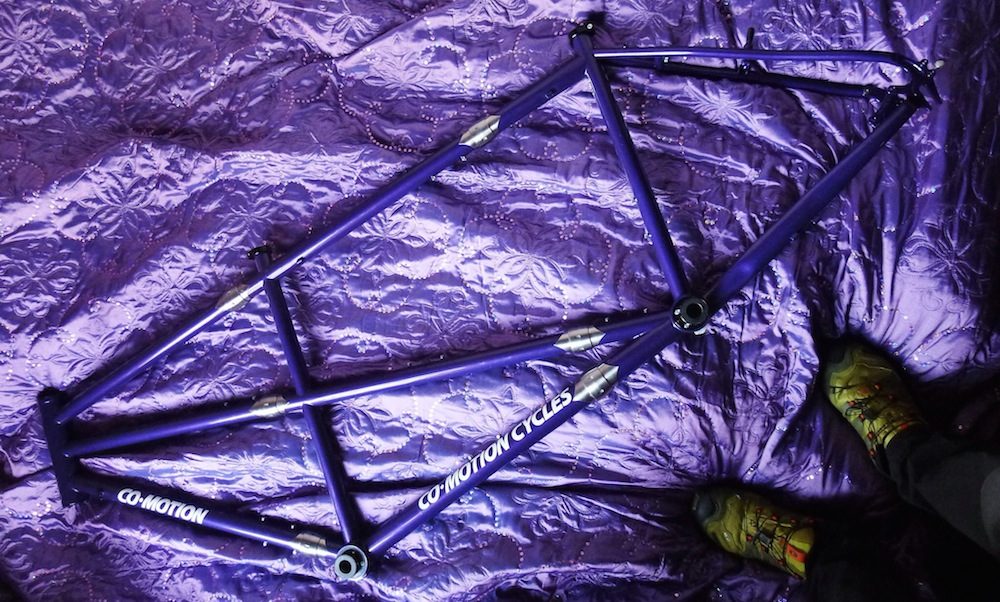
Koga Miyata also makes a foldable tandem, called TwinTraveller.
http://www.koga.com/koga_uk/?bike=true&mdlid=1254&gender=U#4
Koga Miyata also makes a foldable tandem, called TwinTraveller, although difficult to find in their menu system.
http://www.koga.com/koga_uk/?bike=true&mdlid=1254&gender=U#4
Great overview with the tandem strategy. Is there any qualification to put up some of that techniques that you have showed?
I am looking for a rear steer tandem, or a diy to create a rear steer tandem bicycle
Not sure I know what you mean?
Hmmm. Not sure I’ve seen rear steer tandems other than semi-recumbent models from Hase, Circe, Bilenky and TWE.
Where can I see a host of vintage tandem frame designs? Mine is unidentified but possibly a Gitane. It is mixte-like in design for the stoker: obviously a guy girl frame and pretty nice.
No idea, sorry! Maybe another tandem enthusiast will chime in.